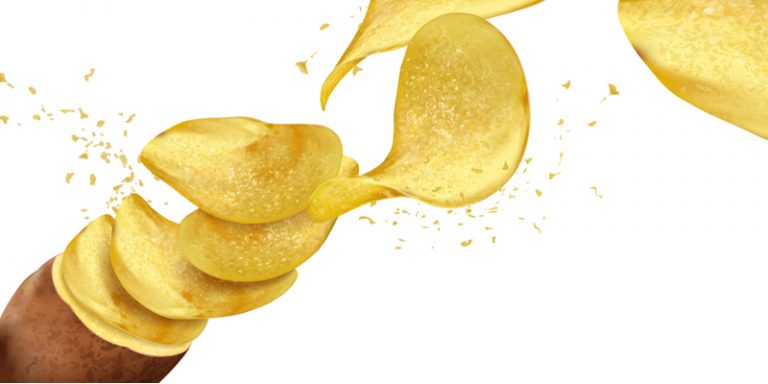Recent research, coupled with the revival trend for potato varieties that have been more or less forgotten, has driven the industry to test a variety of new types of tubers. Each of them has its own characteristics which make it suitable for different processed products. PotatoBusiness asked Arnaud Jansse, applications engineer at Florigo Industry (tna solutions) what potato varieties are best suited for the creation of chips.
In general, potato chips producers are open to new varieties, if they bring benefits, such as higher yield, better quality. There are of course various types, some of them better suited for storage, others that hold a higher dry matter content, types with low reducing sugars content, etc., explains Jansse.
Large snacks producers often have their own development program, from raw material (potatoes, vegetables) onto final products and flavoring / packaging. Usually, the process of finding new varieties starts with the producer’s research for new species and the growers that will produce them, at the beginning in small test fields. Other times, they instruct their own growers/suppliers to grow new species.
When a harvest is ready, the potatoes are tested by running small batches (in a lab or pilot plant or in the main factory), Jansse says, adding that usually the test means “Just fry it”. The test criteria include color, yield based on dry matter content, oil pick up, general appearance.
A potato variety is considered suitable for chips when it meets criteria such as:
Dry Matter % ; High ( 21 – 25% )
Low reducing sugars content ( < 0,3 – 0,5% )
Low or absent Asparagine content
Round shape
Smooth surface, low eye depth
Appealing color, e.g. white, creamy, yellow
Bruising, not susceptible
Seasonal availability: Early harvest, or Suitable for (long) storage
Of course, one important characteristic at the moment is that the tubers need to have a low content of reducing sugars and a low asparagine content, which means a reduced chance of acrylamide formation in potato chips. This meets the new requirement of the European Commission.
In general, the manufacturers are looking for the best potatoes to use for this process, at the right costs, but, in practice, the criteria of choosing can differ based on how certain potato species grow, meaning potato performance. The choices then are made based on availability, but they buy the best types that they can buy locally.
According to the application engineer at Florigo, the most common potatoes that encountered” in the field” are Lady Rosetta; Lady Claire; Saturna; Hermes and Verdi.
Other types that are suitable for chips production are Agria, Lady Amarilla, Lady Britta, Lady Jo, Bintje (in the old days), Premiere, Atlantic, Endeavour, Ranger Russet (USA) and Pink Lady (USA).
In the United States, one special type is “Innate”, for French Fries; the first genetically engineered (GE) potato variety, US approved, designed to produce less of the suspected carcinogen acrylamide.

